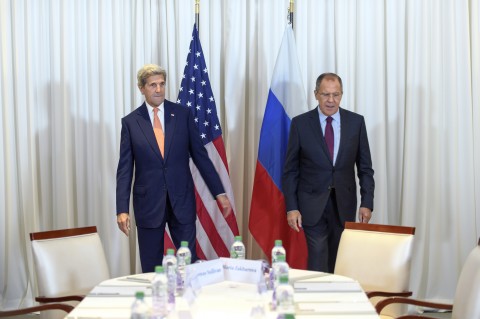-
Tips for becoming a good boxer - November 6, 2020
-
7 expert tips for making your hens night a memorable one - November 6, 2020
-
5 reasons to host your Christmas party on a cruise boat - November 6, 2020
-
What to do when you’re charged with a crime - November 6, 2020
-
Should you get one or multiple dogs? Here’s all you need to know - November 3, 2020
-
A Guide: How to Build Your Very Own Magic Mirror - February 14, 2019
-
Our Top Inspirational Baseball Stars - November 24, 2018
-
Five Tech Tools That Will Help You Turn Your Blog into a Business - November 24, 2018
-
How to Indulge on Vacation without Expanding Your Waist - November 9, 2018
-
5 Strategies for Businesses to Appeal to Today’s Increasingly Mobile-Crazed Customers - November 9, 2018
Despite progress, US-Russia fall short on truce for Syria
While Kerry said this week that technical teams from both sides were close to the end of their discussions, US officials indicated it was too early to say whether a deal was likely.
Advertisement
US Secretary of State John Kerry said late on Friday that talks with Russian Foreign Minister Sergei Lavrov in the Swiss city of Geneva had “achieved clarity on the path forward”, but together they offered few details on how they planned to renew a February cessation of hostilities and improve humanitarian assistance.
He said Friday the widely-circulated image of a 5-year-old boy sitting in an ambulance after an airstrike in Aleppo covered in dust and blood “needs to motivate all of us to get the job done”.
He added that the “vast majority” of technical obstacles to a ceasefire had been agreed but that some issues remained unresolved.
Russian Foreign Minister Sergei Lavrov echoed his American counterpart, telling reporters that “very important steps” had been made on a deal to stop the violence.
There had been hopes of a definitive announcement to stem the fighting in the war-torn country and on proceeding to a new round of UN-brokered peace talks.
Kerry said US and Russian experts would continue to meet in Geneva in the coming days to try to iron out remaining obstacles to a durable deal.
The talks both centered on the possibility of a 48-hour ceasefire in Aleppo to allow more humanitarian aid into the area and weeks of efforts to come up with some sort of deal on joint military operations against the Nusra Front, though the U.S. seems to be souring on that idea.
A ceasefire was announced in February, but it collapsed amid an inability of the worldwide community to address violations. Numerous efforts in the past to pause the fighting and start a political transition have failed, stymied by al-Assad’s continued campaign against the rebels, Russian and Iranian air and ground support, and the moderate and extremist rebel groups fighting him.
Kerry on Friday listed two main priorities to ensure that a prospective revamped ceasefire holds: responding to ceasefire violations by the Damascus regime and checking the rising influence of the former Al-Nusra Front.
Under the proposal, the Syrian government would cease combat air operations, the rebels would stop firing at government positions, and only the two terrorist groups – the Islamic State and the Front – would be targeted by coordinated USA and Russian airstrikes.
Successive rounds of negotiations have failed to end a five-year civil war that has killed more than 290,000 people, forced millions from their homes, and fed an unprecedented migrant crisis in Europe.
De Mistura had voiced hope of bringing the warring parties back to the negotiating table by the end of August, but that deadline looks sure to slip in the face of intense fighting on the ground.
A U.S. -Russian military and intelligence working group agreed over the past several weeks on maps demarcating the primary locations of the Islamic State and the Front, places where those groups are mixed with U.S. -backed rebel fighters, and areas primarily populated by civilians.
Kerry was to meet with the United Nations envoy for Syria, Staffan di Mistura, later Friday in Geneva.
Advertisement
Russian Federation last week gave its blessing to a weekly pause in fighting in Aleppo for 48 hours to allow aid in, but de Mistura said other unspecified parties are still blocking an agreement.





























